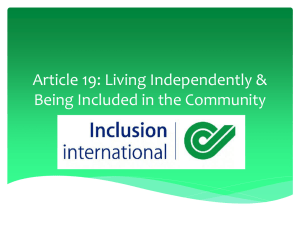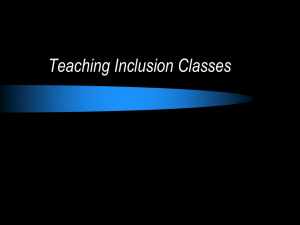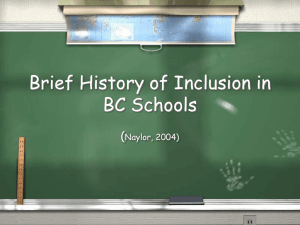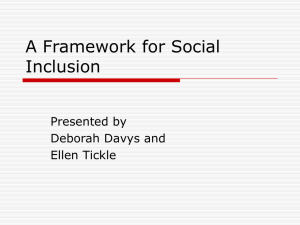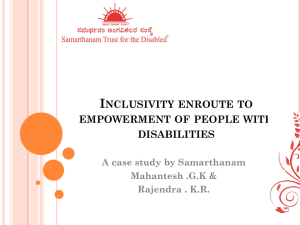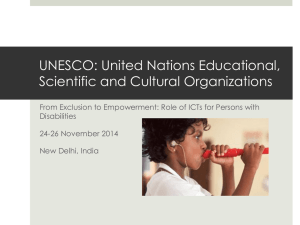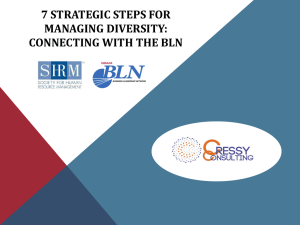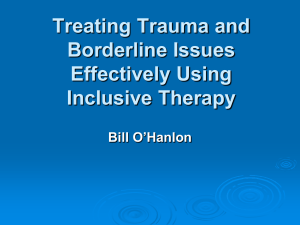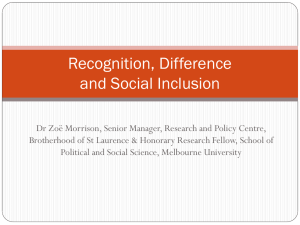Resistance Blocks Struggles Barriers Attitudes
advertisement
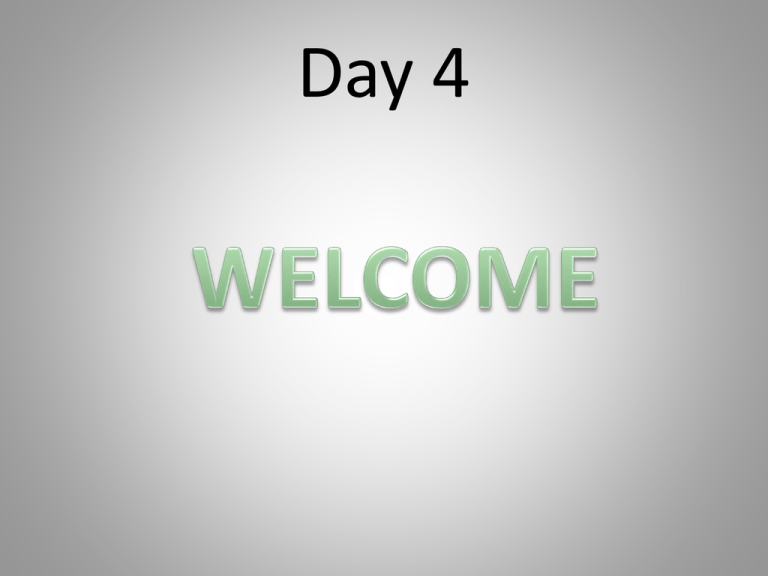
Day 4 Resistance Blocks Struggles Barriers Attitudes What will you do? 4 CATEGORIES OF BARRIERS • • • • COMMUNITY BARRIERS FAMILY / HOME BARRIERS TEAM LEADER ABILITIES & SKILLS BARRIERS ORGANISATIONAL BARRIERS (Barriers sourced from: Abbott & McConkey: Barriers to Social Inclusion – Journal of Intellectual Disabilities (2006). Dr. John O’Brien: SSR: Supporting Social Roles (2010)). What Organisational Policies, Practices and Staff Attitudes may act as barriers to inclusion in your organisations? • We don’t have transport..there’s no driver on…there’s no car available…she’s not old enough to be covered on the insurance. • What about risks? What risks exist? Risk assessments….it is my experience that the people most at risk…are those who are having the assessment done on. We can’t eliminate risks we can only minimize them. Risk Aversion & Blame culture…versus Duty of Care. • There’s only one staff on duty and they are working on their own…they are on the overnight, there’s no backup. They are working with 3 other people. • They need to be back for their medication. • Mother won’t sign off approval/consent. • Communication Barrier • Accessibility Barriers • Move from nursing model to social care to connector model…staff and people in receipt of servicers….the ‘care’ mindset • Institutionalisation of service users and staff • Duty of Care itself…Our Duty of Care? • Policies…Our Health and Safety Policy? • Garda Vetting Attitudes and Practices within the Community that may act as barriers to inclusion • • • • • • The ‘holy’ angel…eternal child attitude The ‘you need help’….attitude I’m not a specialist…attitude The fear factor Misunderstanding Them and Us • Addressing the person who is with the person with the disability. Avoiding the person. • Staring and looking • Or… Looking away • How are children treated by their parents…the reaction of parents to the child’s attitude. Equally important is the staff reaction to the child and parent. • Not knowing that disabilities can be invisible. • Over helping and not asking first. • They talk about the person’s disability in front of them without any regard for the person…they may understand! Environmental Barriers to Inclusion • Physical Access Barriers • Social Access you may be allowed join…but not included....a club/society/workplace/group attitude can act as a barrier • Technology can act as a barrier…no-one available to talk to or explain things or help. How do we overcome barriers to inclusion? We start with ourselves… “Be the change that you want to see in the world” Ghandi We need to be passionate about making changes to organisational practices that will promote inclusion. Lets move the conversation into an Inclusion sphere…..Think Pro…Pro…Pro. When we talk Pro something it is less threatening that Anti-something • Don’t forget…ALL OF YOU CEO’S HAVE SENT YOU ON THIS TRAINING…..they signed up for this. • Use the language of inclusion and social roles • Creativity…solution focused NOT problem finding. • Look for a support person to become an ally. • Encourage the person you are working with to advocate for themselves. • Use a rights restriction form…and committee if you have one…if not…establish one! • Get families on board • Ask for old established practices to be reviewed…use the language of inclusion and be respectful in how you ask. • Are there voluntary resources that can help? • Vantastic, volunteers, friends of family, neighbours these can often help with driving. • Brainstorming where ONLY solutions can be brought to the table. • TRY new options and then when that doesn’t work, try other new options and when that doesn’t work..try again. If the issue is down to a service deficit then bring the evidence of your efforts to Senior Management and look for their solutions. Stay Strong… • Celebrate the achievements….even the small ones. This is really important….record the progress…photos, videos and story telling. • Remember this is lifetime work…it’s not always going to be quick successes. Relationships take time…remember how long you have known your friends. Sources of Information on Barriers to Inclusion • • • • • Dr. John O’Brien - www.inclusion.com (2010) “SSR: Supporting Social Roles A Second Bottom Line for Services to People with Developmental Disabilities”. www.psawa.com/Barriers_to_participation_and_inclusion.html “Removing the Barriers to Community Participation and Inclusion”. Suzanne Abbott & Roy McConkey (University of Ulster) (2006) Written for the Journal of Intellectual Disabilities “The Barriers to Social Inclusion as perceived by People with Intellectual Disabilities”. Dr. John O’Brien – www.inclusion.com “An Ethics of Possibility”. (This has Martin’s story as presented on Day 4). National Federation of Voluntary Bodies (2009) “Vision Statement for Intellectual Disability in Ireland for the 21st Century”. This document makes reference to: self determination, friendships & relationships, inclusion, equity and equal citizenship – with further reference to risk management and service delivery).


